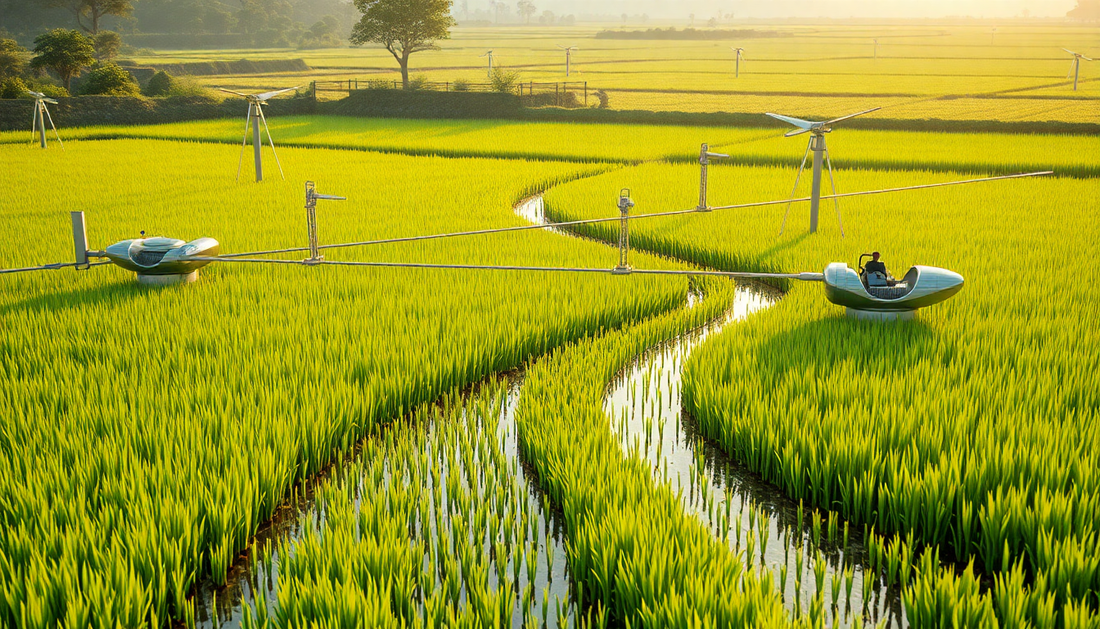In the ever-evolving landscape of global agriculture, one technique is poised to revolutionize the way we grow one of the world's most vital crops: rice. Alternate Wet Drying (AWD), a simple yet ingenious method, is transforming the way farmers approach this staple food, offering a path towards a more sustainable and eco-friendly future.
The Traditional Approach to Rice Farming
For centuries, rice cultivation has been synonymous with the cyclical flooding and drying of paddy fields. Farmers would meticulously manage the water levels, ensuring their crops received the necessary moisture to thrive. This traditional approach, while effective, came with a significant environmental cost – the release of methane, a potent greenhouse gas.
As the world grapples with the pressing issue of climate change, the need for more sustainable agricultural practices has become increasingly urgent. The rice industry, responsible for a substantial portion of global methane emissions, has found itself at the forefront of this challenge.
Introducing Alternate Wet Drying (AWD)
Enter Alternate Wet Drying, a revolutionary technique that offers a solution to the environmental concerns surrounding rice farming. At its core, AWD involves a simple yet ingenious approach to water management. Instead of continuously flooding the fields, farmers strategically alternate between periods of flooding and drying, allowing the soil to partially dry out before reintroducing water.
This subtle shift in water management has a profound impact on the overall environmental footprint of rice cultivation. By reducing the duration of the flooded periods, AWD effectively curbs methane emissions, contributing to a more sustainable agricultural landscape.
The Benefits of AWD
The advantages of Alternate Wet Drying extend far beyond its environmental impact. This innovative approach to rice farming offers a multitude of benefits that are transforming the industry:
Water Conservation
One of the most significant advantages of AWD is its ability to conserve water. By reducing the number of flooding cycles required for rice cultivation, farmers can significantly decrease their water usage, a critical consideration in regions facing water scarcity.
Reduced Methane Emissions
As mentioned earlier, the primary environmental benefit of AWD is its ability to mitigate methane emissions. By limiting the duration of flooded periods, the technique effectively reduces the anaerobic conditions that lead to methane production, making it a powerful tool in the fight against climate change.
Improved Farming Efficiency
Adopting AWD not only benefits the environment but also enhances the efficiency of rice farming operations. By optimizing water usage and reducing the number of flooding cycles, farmers can save time, labor, and resources, ultimately improving their overall productivity and profitability.
Implementing AWD: A Case Study in India
The success of Alternate Wet Drying is exemplified by the work of Jean-Philippe Laborde, a pioneering researcher who has spearheaded the implementation of this technique in India. Laborde's efforts have been instrumental in demonstrating the real-world impact of AWD, inspiring a growing number of farmers to embrace this sustainable approach.
In a recent interview with the BBC World Service's "The Food Chain," Laborde shared his insights on the adoption of AWD in India. "Last year, we got 1,268 farmers on board applying this AWD technique to reduce the overall methane emission," he revealed, highlighting the growing momentum behind this transformative method.
The Environmental Impact of AWD
The environmental benefits of Alternate Wet Drying are undeniable. By reducing methane emissions, AWD plays a crucial role in mitigating the impact of rice cultivation on global climate change. According to Laborde's findings, the widespread adoption of this technique has the potential to significantly curb the greenhouse gas footprint of the rice industry.
As the world continues to grapple with the pressing challenges of sustainability, the success of AWD serves as a shining example of how innovative agricultural practices can drive positive change. By empowering farmers to adopt more eco-friendly methods, we can collectively work towards a future where the production of our most essential crops aligns with the preservation of our planet.
The Future of Rice Farming
The future of rice farming lies in the widespread adoption of Alternate Wet Drying and other sustainable practices. As the global community becomes increasingly aware of the environmental impact of traditional agricultural methods, the demand for innovative solutions like AWD will only continue to grow.
Technological advancements, such as the development of more precise water management systems and real-time monitoring tools, will further enhance the effectiveness of AWD, making it more accessible and user-friendly for farmers around the world. Additionally, the economic benefits of reduced water usage and improved farming efficiency will serve as powerful incentives for the widespread adoption of this transformative technique.
Conclusion
Alternate Wet Drying represents a pivotal moment in the history of rice farming, offering a pathway towards a more sustainable and environmentally conscious future. By embracing this innovative approach, farmers can not only reduce their carbon footprint but also enhance the efficiency and profitability of their operations.
As the global community continues to grapple with the pressing challenges of climate change, the success of AWD serves as a beacon of hope, demonstrating that meaningful change is possible when we harness the power of innovative agricultural practices. Together, we can cultivate a greener, more resilient future for our planet and the generations to come.

